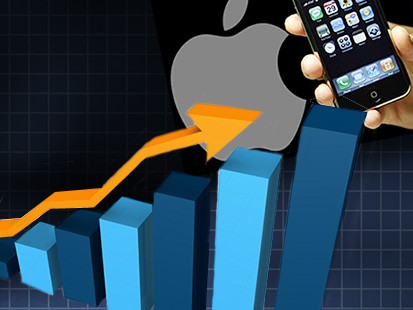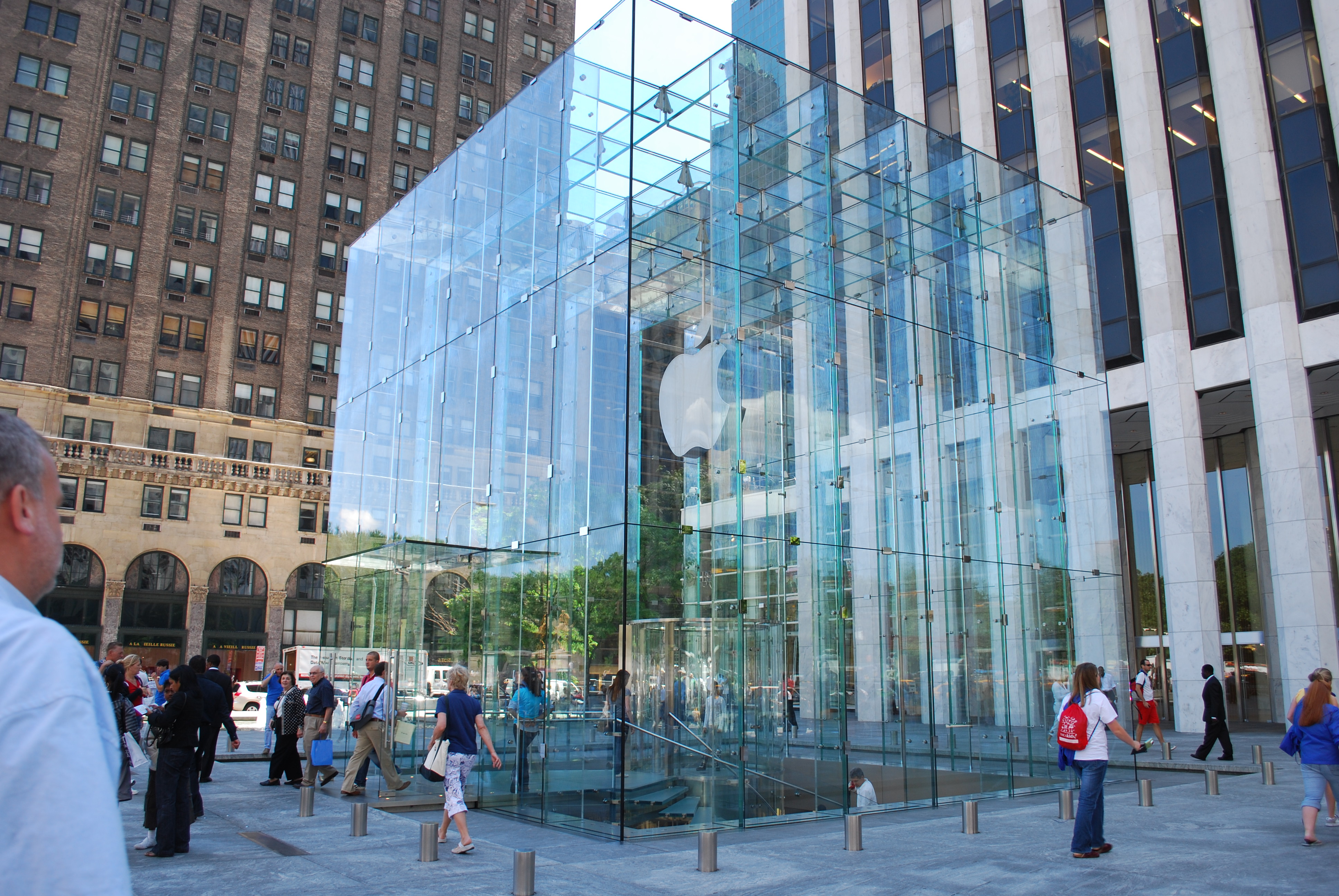The iPhone 5 News Blog News Feed |
| AT&T Earnings Indicate Outdated iPhone Models Dominating Newer Android Smartphones Posted: 21 Jul 2011 07:27 AM PDT
The iPhone 4 is well over a year old. In smartphone years, that’s like being a senior citizen, thanks to the break-neck speed that mobile technology advances. Since the release of the iPhone 4 in the summer of 2010, Android has released a horde of new smartphones that, when combined into one fighting force against the iPhone, wields many more newfangled features for the avid smartphone users. From 4G capabilities and 3D screens and cameras, to 8-megapixel cameras and dual touch screens, the Android-based smartphone designs that have followed the iPhone 4 would seem to have sucked up the imagination of mobile technology — so much so that it has led to a feeling that the iPhone 5 can not and will not offer users anything new that Android hasn’t already tried. And yet, in spite of this perceived Android dominance, the old iPhone 4 has managed to singlehandedly outsell Android, according to a new earnings report from AT&T. Like Uma Thurman in the Kill Bill series or Stallone in Rambo, one improbable iPhone has managed t0 mow down a multiplicity of competitors, almost in absurd fashion. According to The Street, for AT&T’s second quarter, “In wireless, where the iPhone represented nearly two-thirds of all smartphones sold in the quarter, AT&T added 331,000 postpaid subscribers. Analysts had been looking for about 200,000 new phone subscribers.” In that time, Android has thrown an array of impressive adversaries at Apple, including the Samsung Galaxy S II, which is touted as the natural rival to the iPhone 5. The success of the iPhone 4 is not only evidenced in AT&T’s numbers; Apple’s profits are resoundingly high, thanks to both the iPhone 4 and iPad 2, as Bloomberg reports: “IPhone sales were buoyed by international demand, particularly in China, where total revenue jumped sixfold to $3.8 billion. After overcoming supply shortages for the iPad 2 following its March debut, Apple saw sales of the tablet soar. The device is now its second-biggest revenue source — behind the iPhone — less than two years after first being introduced.” Folks, this is amazing: Apple sold over 20 million iPhones in their third quarter of 2011 alone. So, how has Apple managed to make the iPhone 4 into such a formidable smartphone, even a year after its release? There isn’t just one answer to the question. A big slice of the revenue pie has come from an expansion into the Asia Pac rim, with China, Hong Kong, and Taiwan contributing a great deal to Apple’s bottom line. Apple COO Tim Cook says it best himself: “‘China was very key to our results,’ said Chief Operating Officer Tim Cook, who is handling day-to-day leadership during Jobs's medical leave. ‘This has been a substantial opportunity for Apple, and I firmly believe that we're just scratching the surface right now.’" In very practical terms, Apple has sensed the fact that the money has shifted away from the U.S. and its wavering economy, and into Asia, where — while poverty still dominates many countries — a burgeoning middle class and robust mobile subscribership is yearning for the iPhone. Understanding this shift, Cupertino has set its sights on squeezing more profits out of Asia. But expansion into China still doesn’t explain AT&T’s success with the iPhone 4 in the U.S. In spite of an increasing number of Americans losing their jobs and contending with food, gas, and goods prices rising 45% or more in the past year, AT&T — and Apple by extension — has managed to peddle plenty of iPhones in 2011. Apple has facilitied these sales by keeping the iPhone 4 front and center in the eyes of American consumers, first by expanding the iPhone’s reach by bringing Verizon on board, then releasing the white iPhone 4, and finally debuting iOS 5 and iCloud, both of which are fully compatible with the iPhone 4. A steady stream of effective marketing and advertising has also helped. As usual, Apple has managed to control the marketing message behind their iPhone 4 perfectly (a feat that cannot be said for the runaway train that is the iPhone 5 rumor mill). That being said, when one ponders the impressive iPhone 4 sales over its long, meandering lifecycle in the marketplace, one has to wonder why we have even questioned why the iPhone 5 has been long delayed. Why, after all, would Apple rush to replace their best-selling product, especially when they are still selling 20+ million units of it nearly a year after its release. Hence the adage: if it’s ain’t broke, don’t fix it.
|
| Increased Brick-and-Mortar Apple Stores To Bolster iPhone 5 Sales Posted: 20 Jul 2011 03:40 PM PDT
Most of the top tech analysts these days are predicting that Apple will sell anywhere between 15 million and 25 million iPhone 5 units in 2011 alone. When you consider the prospect that the iPhone 5 may not be released until September, it may only give Apple 3 1/3 months to sell 25 million units — an audacious feat for even the ever-audacious Apple. Analysts attribute this initial iPhone 5 sales boom to come from several factors: a longer-than-usual wait for the iPhone 5, a rumor mill that has reached critical mass, a restless generation of 3Gs users who skipped the iPhone 4 in anticipation of buying the “5,” and most importantly, the supposition that Apple will add both Sprint and T-Mobile — the U.S. third and fourth-largest mobile carriers — as well as expand their reach into China. All of these factors add up to a sales explosion for the iPhone 5 that may dwarf even the consistently brisk iPhone 4 sales. But another factor in selling more iPhones may also come from the opening of more Apple retail stores. A report today from Apple Insider details the rising success of the Apple retail stores, as well as Apple’s plans to open more stores worldwide, including its first store in Hong Kong, a kind of pioneering step into eventually penetrating mainland China. All in all, Apple will open 30 new stores in the U.S. alone: “Apple is capitalizing on its strong retail store sales–and preparing for its upcoming iPhone 5 launch–by erecting 30 new outlets before the third calendar quarter ends in September." We have a full report on the success of Apple stores, the opening of more stores to increase the sales visibility of the iPhone 5, and the opening of “fake” Apple stores in China, all on the iPhone 5 News Ticker here. Could the increased number of Apple stores in the U.S. and abroad play a major role in empowering 25 million iPhone 5 sales in one quarter alone? Chances are, the additional stores and staff will comprise a smaller piece of the sales pie than meets the eye; the lion’s share of increased iPhone 5 sales would come first from the addition of two new sales partners in Sprint and T-Mobile. While 30 stores placed strategically in the right metropolitan areas could peddle an impressive quantity of iPhone 5s, 30 extra stores isn’t a large number compared to the likes of AT&T or Verizon. AT&T, for example, has over 2,000 stores. Apple operates about 300 stores worldwide. Apple Stores: What’s the Point? Given the wide-ranging scope of retail stores run by AT&T and Verizon — not to mention the addition of Sprint and T-Mobile — as well as the special Apple Store sections in large electronics chains like Best Buy, what is the purpose of the Apple Store for Apple, strategically speaking? To be sure, adding more stores certainly won’t hurt Apple’s bottom line, and more retail outlets give them a brick-and-mortar place to exclusively sell the iPhone 5. That being said, if Apple does add Sprint and T-Mobile to the mix of iPhone 5 retailers, they’ll be matching Android store for store in terms of their retail outlets — a scant 30 extra Apple Stores, even if they are placed in the hearts of major cities, would not necessarily supercharge iPhone sales. Rather, I think that the Apple Store is for the most part a kind of local billboard for further emblazoning the Apple brand onto the brains of consumers. Much like a Chanel store, the Apple Store, while indeed a viable outlet for selling Apple products, may be more about putting the bitten apple logo up in lights — particularly in big cities where large concentrations of consumers are milling about. Until Apple is able to put an apple Store in every mall and major retail center in the U.S. — much like Radio Shack or Best Buy — the Apple Store still remains a somewhat exclusive boutique — a one-of-a-kind phenomenon in the consumer electronics industry. But that’s Apple for you. |
| You are subscribed to email updates from The iPhone 5 News Blog To stop receiving these emails, you may unsubscribe now. | Email delivery powered by Google |
| Google Inc., 20 West Kinzie, Chicago IL USA 60610 | |



